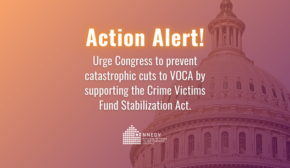Connecting the Dots: Reproductive Abuse and Coercion in the Context of Domestic Violence
February 14, 2017
While February 14 is recognized as Valentine’s Day in the United States, around the world it is recognized as V-Day: a global day to address and end violence against women and girls. Violence against women and girls takes many forms, including reproductive abuse and reproductive coercion. Within the context of domestic violence, this occurs when an abuser uses intimidation, threats, and/or physical violence to control their partner’s reproductive choices. This can include not allowing someone to control their own birth control methods, forcing someone to either end or continue a pregnancy, pressuring a partner to get pregnant, or sabotaging birth control. [1]. Due to these abusive tactics, women experiencing domestic violence are less likely to use birth control and are at greater risk for reproductive health issues. [1] While reproductive abuse and coercion is an everyday reality for many survivors of domestic violence, it is also part of a long history of systemic oppression.
The United States has a long, troubling history of using reproductive abuse (in the form of forced sterilization) as a way to exert power and control over marginalized groups, including people of color and people with disabilities. Throughout the 20th century, these efforts most often targeted women of color and low-income women in the name of public health. [2, 3] As a result, women from marginalized communities often have more historic and current barriers to reproductive justice and healthcare.
Today, the fight to end violence against women and girls must include a focus on reproductive justice, as it is a necessary component of gender equality and racial justice. Reproductive justice can only be achieved when all people have the social, political, and economic power to make decisions about their own health, bodies, and sexuality. Unfortunately the power to make these decisions is too often in the wrong hands. On V-Day, the National Network to End Domestic Violence (NNEDV) renews its commitment to addressing domestic violence and working to create a social, political, and economic environment in which violence against women no longer exists.
—
[1] Contraception Journal. Pregnancy coercion, intimate partner violence and unintended pregnancy. Retrieved from: http://www.contraceptionjournal.org/article/S0010-7824%2809%2900522-8/abstract
[2] 2. Garcia, S. (July 10, 2013). 8 Shocking Facts About Sterilization in U.S. History. Policy.Mic. Retrieved from https://mic.com/articles/53723/8-shocking-facts-about-sterilization-in-u-s-history#.yP5CJvN0A
[3] Stern, A. M. (2005). STERILIZED in the Name of Public Health: Race, Immigration, and Reproductive Control in Modern California. American Journal of Public Health, 95(7), 1128–1138. http://doi.org/10.2105/AJPH.2004.041608





